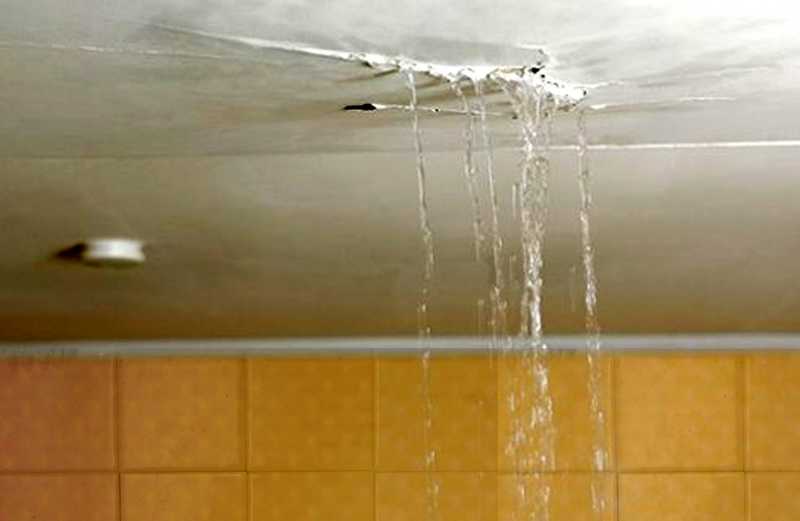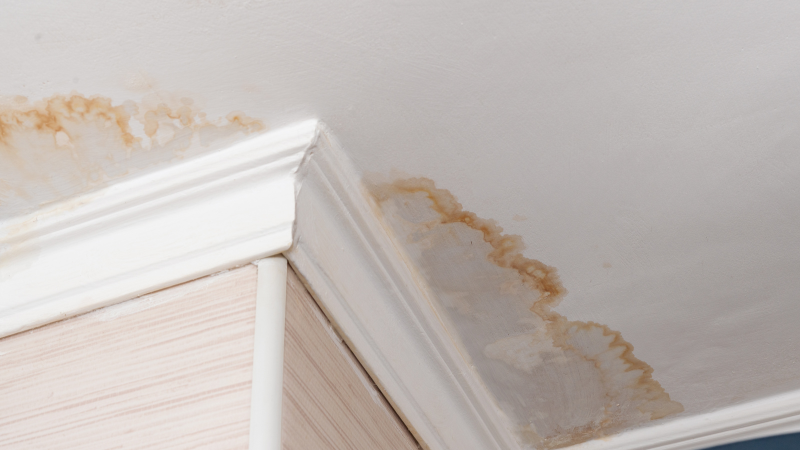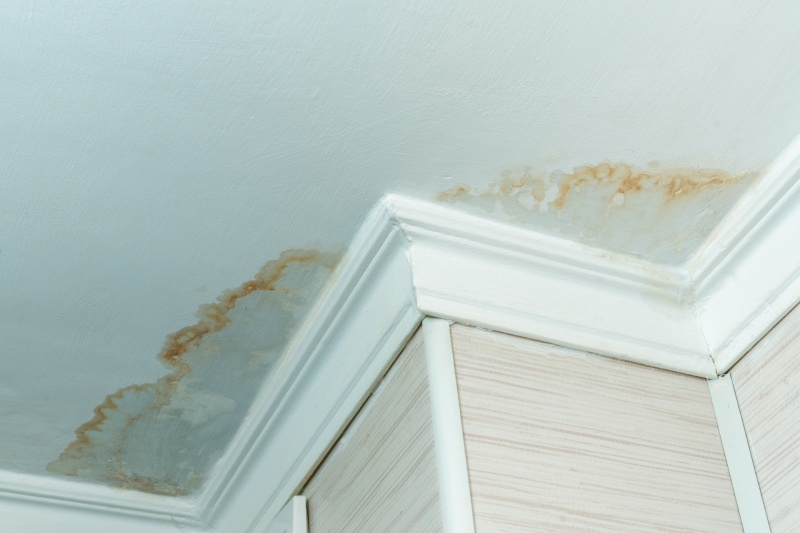Troubleshooting the Leak

A flooded bathroom ceiling is a nightmare scenario for any homeowner. Not only does it create a major mess, but it also points to a serious underlying plumbing problem. The first step in dealing with a flooded bathroom ceiling is to figure out where the leak is coming from. This will help you determine the best course of action for fixing the problem and preventing it from happening again.
Identifying the Source of the Leak
The source of the leak could be a variety of things, ranging from a simple leaky faucet to a major plumbing issue. Here are some common causes of upstairs bathroom flooding:
- Faulty Plumbing: Over time, pipes can corrode, crack, or develop leaks. This is especially common in older homes with galvanized pipes.
- Overflowing Tubs or Showers: A simple overflow drain issue can quickly lead to a flooded bathroom. This could be due to a clogged drain, a faulty overflow drain, or a user error.
- Leaks from the Roof: If your roof is damaged or improperly sealed, water can seep in and cause leaks in the bathroom ceiling, especially during heavy rains or snowstorms.
Pinpointing the Leak
Once you’ve identified some potential causes, you’ll need to pinpoint the exact source of the leak. Here’s how to do it:
- Check for Signs of Water Damage: Look for water stains, discoloration, or warping on the ceiling, walls, and floor. These signs can help you narrow down the location of the leak.
- Inspect Pipes and Fixtures: Carefully examine all pipes and fixtures in the bathroom, including the shower, tub, sink, and toilet. Look for any signs of leaks, such as dripping water, rust, or corrosion.
- Look for Leaks in the Ceiling: If you can access the attic or crawl space, look for any signs of water damage or leaks in the ceiling. This can help you pinpoint the exact location of the leak.
Shutting Off the Water Supply
Once you’ve identified the source of the leak, it’s important to shut off the water supply to prevent further damage. Here’s how to do it:
- Locate the Main Water Shut-Off Valve: This valve is usually located near the water meter, in the basement, or in a utility closet. It’s typically a large valve with a handle that can be turned to shut off the water supply to your entire home.
- Turn Off the Water Supply: Turn the handle of the main water shut-off valve clockwise until it stops. This will shut off the water supply to your entire home.
- Locate the Shut-Off Valve for the Affected Area: If you’re dealing with a leak in a specific fixture or area, there may be a separate shut-off valve for that area. These valves are typically located near the fixture or pipe.
- Turn Off the Water Supply to the Affected Area: Turn the handle of the shut-off valve clockwise until it stops. This will shut off the water supply to the affected area.
Addressing the Damage

A flooded bathroom can quickly escalate into a major problem if left unattended. Ignoring the issue can lead to significant structural damage, mold growth, and potential health risks. It’s crucial to take immediate action to minimize the damage and prevent further complications.
Drying the Affected Area
Promptly drying the affected area is essential to prevent mold growth and structural damage. The following steps Artikel a comprehensive drying process:
- Remove Standing Water: Immediately remove any standing water using towels, mops, or a wet-dry vacuum. Be careful not to spread the water to unaffected areas.
- Ventilate the Area: Open windows and doors to allow fresh air to circulate. This helps to speed up the drying process and prevent moisture buildup.
- Use Fans and Dehumidifiers: Place fans strategically to circulate air and promote evaporation. Use dehumidifiers to remove excess moisture from the air.
- Remove Wet Materials: Remove any wet carpets, rugs, furniture, and other materials that cannot be dried quickly. This helps to prevent mold growth and further damage.
Repairing the Leak: Upstairs Bathroom Flooded Leaking Through Ceiling

Once you’ve identified the source of the leak, it’s time to get to work fixing it. The repair method will depend on the specific problem, but there are some common approaches.
Replacing Pipes
If the leak is coming from a broken or corroded pipe, you’ll need to replace it. This is a more involved process that may require the help of a plumber.
- Shut off the water supply: Before you start working, turn off the water supply to the affected area. This will prevent further damage and make the repair process safer.
- Cut out the damaged section: Using a pipe cutter or hacksaw, carefully cut out the damaged section of pipe.
- Install a new section: Connect the new pipe section to the existing pipes using appropriate fittings. Make sure the connections are tight and secure.
- Turn the water back on: Once the new pipe is installed, turn the water back on and check for leaks.
Repairing Fixtures, Upstairs bathroom flooded leaking through ceiling
Leaks can also occur in fixtures like faucets, showerheads, and toilets. These repairs are often simpler and can be done by yourself.
- Tighten loose connections: If the leak is coming from a loose connection, simply tighten the nut or screw. Be careful not to overtighten, as this can damage the fixture.
- Replace worn-out parts: If the leak is coming from a worn-out part, like a washer or O-ring, replace it with a new one. You can find replacement parts at most hardware stores.
- Call a plumber: If you’re not comfortable repairing the fixture yourself, or if the leak is persistent, call a plumber. They have the experience and tools to handle more complex repairs.
Sealing Cracks
Cracks in pipes or in the surrounding areas can also lead to leaks. These can be sealed using various methods.
- Epoxy: For larger cracks, epoxy can be used to fill the gap and create a strong bond.
- Caulk: For smaller cracks, caulk can be used to seal the gap and prevent water from seeping through.
- Pipe wrap: For cracks in pipes, pipe wrap can be used to create a watertight seal.
Patching the Ceiling
Once the leak is fixed, you’ll need to patch the damaged ceiling. Here’s how:
- Remove the damaged drywall: Carefully remove the damaged drywall, making sure to cut around the affected area.
- Apply patching compound: Apply patching compound to the area, filling in the hole or gap. Smooth out the compound with a putty knife.
- Let it dry: Allow the patching compound to dry completely before sanding it down to create a smooth surface.
- Prime and paint: Prime the area with a primer, then paint it to match the rest of the ceiling.
Preventing Future Leaks
Once the leak is repaired, you can take steps to prevent future leaks:
- Regular plumbing maintenance: Have your plumbing system inspected and maintained regularly to identify potential problems before they become major leaks.
- Use water-resistant materials: When remodeling or building, choose water-resistant materials for areas prone to leaks, like bathrooms and kitchens.
- Ensure proper ventilation: Adequate ventilation helps to prevent moisture buildup, which can contribute to leaks.
Upstairs bathroom flooded leaking through ceiling – A flooded upstairs bathroom leaking through the ceiling is a serious problem, requiring immediate attention. The water damage can create ideal breeding grounds for various pests, including little brown flying bugs in bathroom that thrive in damp environments. Addressing the leak is crucial not only to prevent further damage but also to eliminate potential insect infestations, ensuring a safe and healthy living space.
An upstairs bathroom flood leaking through the ceiling is a homeowner’s nightmare. While tackling the leak is priority one, it’s also a good time to consider upgrades. If you’re looking for a durable and stylish solution for your shower, stainless steel bathroom curtain rods offer a sleek and modern aesthetic that can withstand the moisture and humidity of a bathroom.
Once the leak is repaired, a new shower curtain rod will add a touch of sophistication and help prevent future water damage.